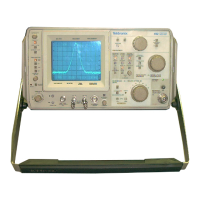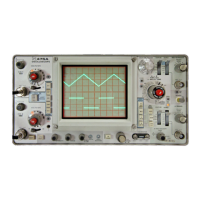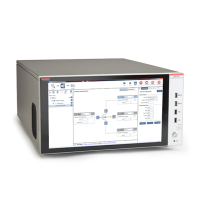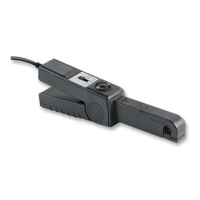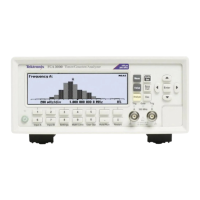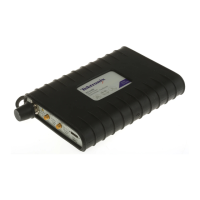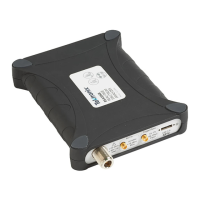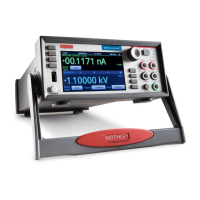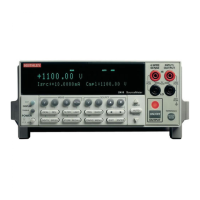Hewlett-Packard
Hewlett-Packard
Hewlett-Packard
Hewlett-Packard
Hewlett-Packard
MX292B Wave-guide to coaxial adapter.
MP 292B Wave-guide to coaxial adapter.
NK292A Wave-guide to coaxial adapter.
11503A flexible wave-guide.
11504A flexible wave-guide,
PERFORMANCE CHECK PROCEDURE
General
In the following procedure, test equipment connections or
control settings should not be changed except as noted. If
only a partial check is desired, refer to the preceding step(s)
for setup information.
The following procedure uses the equipment listed under
Recommended Equipment. If substitute equipment is used,
control settings or setup must be altered to the require-
ments of the equipment used.
Several checks use a 200 MHz signal applied to the RF
INPUT connector. This IF feedthrough signal is not tunable
with the RF center frequency. To avoid interference from
other signals it is recommended that the tunable signals be
positioned off the screen with the RF CENTER FREQUENCY
control.
Preliminary Procedure
Connect the instrument to a power source within the reg-
ulating range of the Type 491. Turn the POWER switch to
ON and allow at least 20 minutes warm up time at 25° C
±5° C before checking the instrument to given accuracy.
Set the front panel controls as follows:
INTENSITY
FOCUS and
ASTIGMATISM
POSITION
TIME/DIV
VARIABLE
SLOPE
LEVEL
SOURCE
Dispersion Controls
DISPERSION RANGE
DISPERSION-COUPLED
RESOLUTION
IF ATTENUATOR dB
IF CENTER FREQ Controls
IF CENTER FREQ
FINE
VIDEO FILTER
VERTICAL DISPLAY
Nominal brightness
Adjusted for a sharply
focused display
Position the trace to the
bottom graticule line and
center horizontally
1 ms
CAL
+
FREE RUN
INT
MHz/DIV
10 (MHz/div)
All switches OFF
Midrange (000)
Midrange
OFF
LIN
RF Band Selector
FINE RF CENTER FREQ
MIXER PEAKING
Phase Lock Controls
INT REF FREQ
A
Centered (5 turns from
either extreme)
Search
OFF
1. Trace Alignment
a. Requirement—Horizontal trace alignment is not criti-
cal and is usually set to the operator’s requirement, If mis-
alignment is excessive (approximately 2°) refer to the Cali-
bration Section.
2. Astigmatism
a. Requirement—Well defined display with equally fo-
cused vertical and horizontal segments in the display.
b. Adjust the GAIN control for a display with approxi-
mately 1 division of noise.
c. Adjust the FOCUS control for optimum focus, then
adjust the ASTIGMATISM control for optimum vertical def-
inition. Display should be well defined with optimum setting
of the FOCUS control.
3. Scale Illumination
a. Requirement-Graticule scale illumination must vary
smoothly from no illumination with the SCALE ILLUM control
fully counterclockwise to maximum illumination with the con-
trol fully clockwise.
b. Rotate the SCALE ILLUM control from a fully counter-
clockwise position to full clockwise.
c. Illumination must increase smoothly as the control is
rotated,
4. Position Controls
a. Requirement—Vertical POSITION control must posi-
tion the sweep beyond the upper and lower graticule limits,
Horizontal POSITION control must position either end of the
sweep into the graticule area.
b. Rotate the Vertical POSITION control to both extremes.
Note that the range of the control equals or exceeds the
requirements in step a.
c. Rotate the Horizontal POSITION control to both ex-
tremes. Note that the range of the control equals or exceeds
the above requirements.
5. Check Sweep Length
a. Requirement—Sweep Length must equal 10.5 divisions
±0.2 divisions.
b. Check the above requirements for the sweep length.
5-2

